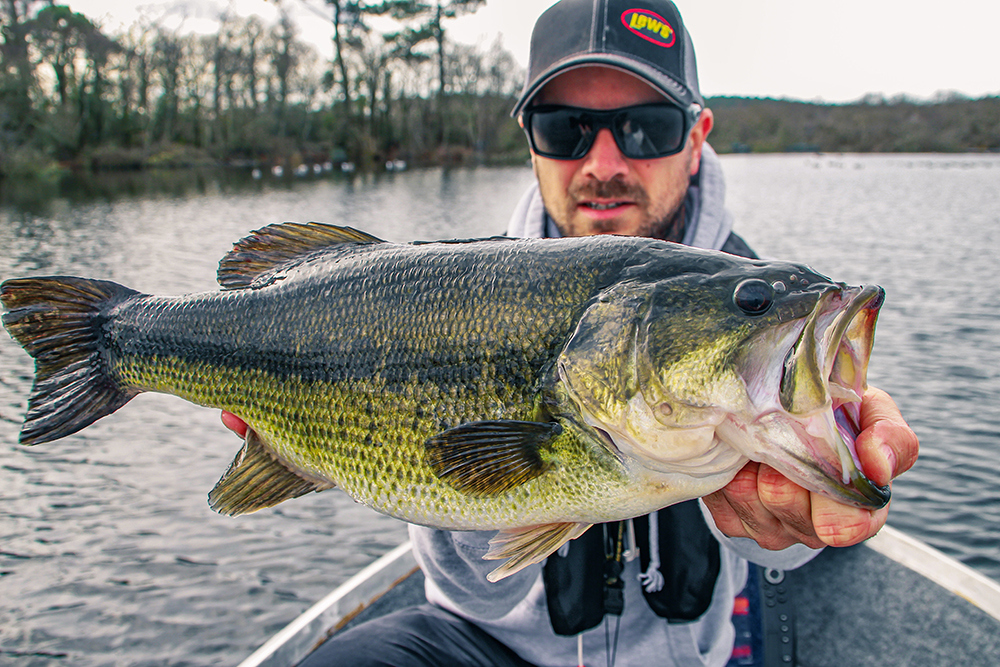By : Danger Kelly
Bass don’t just see well; they see extraordinarily well. However, water clarity, depth, and light intensity serve to distort their vision in the same manner as light, distance, and particulates distort our vision on land.

What’s astonishing here is that while many anglers understand the concept of diminishing light penetration at depth--affecting color, and ultimately the identification of prey--they often overlook the fact that the same concept applies to horizontal distances through water from the perspective of the fish.
This misunderstanding leads to a great deal of lost opportunity.
Due to biological and environmental constraints, a bass can see roughly 50 feet in optimal conditions. If one were to attempt to conceptualize this, it would not be linearly up from the bottom, but rather a sphere stretching out in all directions around the fish. And in all directions, particularly down, both color and clarity diminish as the distance grows, while color diminishes uniformly as depth increases regardless of distance.
This is the Sight Sphere and will be critical in both lure selection and presentation.
In this sphere, the area below and directly behind the fish are blind spots. This leaves over 300+ degrees of vision around and above a bass as observable space. For this reason, bait presentation in relation to the depth of a fish will dramatically affect catch rates.
So, it is key to establish the depth of the fish before selecting lures. This can be readily accomplished with modern electronics and it is important to remember that specifics are critical here. For example, if a group of four pounders are 2 feet from the bottom in 15 feet of water, a sight we have all seen on our electronics, it would be incorrect to think these fish are ‘relating’ to the bottom per se. If you decide to work a bottom oriented lure, such as a jig in this scenario, you may well drag it under their current depth. The fish may instinctively know it’s there, but they may take little notice because the bass’s catch rate coming down from above is lower since they are in plain sight to the prey and the prey will instinctually run when they turn to strike.
If you are using a yo-yo approach though, that same jig may trigger a strike if you get the spacing correct. It may still be a lower catch rate. Working these details out is up to you, but seeing it from the perspective of the Sight Sphere will give you a much clearer sense of which lure to select and how to present it to the fish.
But what about a predatory, or calculated strike? How does that relate to the sphere? To answer this, we need to discuss binocular vision. Humans, who have eyes in the front of their head, have 200 degrees or so of peripheral vision, and 150 degrees of binocular vision, which is another way of saying they can see something with both eyes providing greater clarity and depth perception. Bass, as stated, have more than 300 degrees of peripheral vision but only 25-30 degrees of binocular vision for what is in front or slightly above them. The natural predatory strike for a bass will be head on and coming from below their prey. Bass will have very little time to analyze a moving lure up close because it will only be in their binocular vision for a moment.
This is why action and the motion itself are far more important than being a picture-perfect replica where moving baits are concerned. Bass will look at prey in binocular vision from a distance, but by the time they approach, they are moving at speed which blurs the details. As the bait slows down and a bass can investigate up close, they have time to really focus, and things get more complex.
But the Sight Sphere concept remains consistent. This is why understanding water column presentation in relation to the Sight Sphere is so essential to becoming a complete angler. A suspended fish at any depth, for example, is likely a moving fish, and will be largely focused on scanning for predators, prey, or anything out of the ordinary occurring within their sight sphere. But make no mistake, prey above them is of special interest because these fish are vulnerable to attack from within their blind spot.
And predators key on vulnerability.
This gives rise to any number of middle to upper water column baits such as the Tour Grade Spinnerbait, the Squadron Swimbait Jig Head with a Rage Swimmer, the Thunder Cricket Vibrating Jig, and if they are willing to hit on the top, the KVD Sexy Dawg and the KVD Sexy Dawg Jr. rarely disappoint.
In each case, the idea is to present this lure at a depth that is above the target fish and within their site sphere so they can identify it, turn to get the lure into their binocular vision range which provides them increased distance and greater clarity in order to pursue.
The thing to remember is that as the water clarity becomes obscure, the depth increases, and light intensity dulls, the Sight Sphere contracts in size. In this case, you have three options.
The first is to present the bait in closer proximity, which is a technique that ultimately leads to pure reaction in near-zero visibility.
The second option is to present lures that artificially increase the sphere size via color, size, or flash.
Finally, you can turn to lures that key on other senses such as the vibration, smell, or sound.
You should always be using any number of these techniques to increase your catch ratio. The conditions will dictate the tactical solution.
In any case, understanding and thinking in terms of the Bass Sight Sphere and where it is during each cast will greatly assist you in choosing the right bait and presentation placing you in the optimal position for a strike.